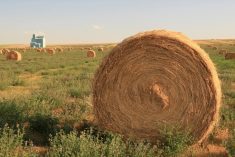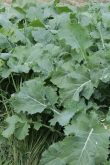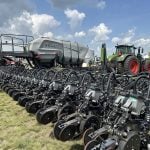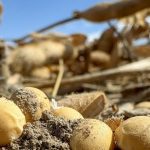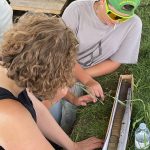You’ve tested your feed and you’ve got some high-nitrate crop in the field or the feedyard. What exactly are the risks to your cattle and what can you do to manage them?
High nitrate levels can affect reproduction, and this time of year is especially risky for herds calving in May or June, says Barry Yaremcio, ruminant nutritionist and production management consultant based in Stettler, Alta. During the first 100 days of pregnancy, high nitrates can prevent the fertilized egg from implanting in the uterine wall, causing abortion. Farmers won’t see any obvious signs of trouble during the first three months of pregnancy.
But it’s not the nitrates themselves that cause problems for ruminants. Rumen microbes transform nitrates to nitrites and nitrites to ammonia. Converting the nitrite to ammonia is the hardest step, says Yaremcio, and if the nitrites accumulate, the cow can’t release carbon dioxide from her lungs. This decreases her oxygen-carrying capacity, and the cow can suffocate.
Read Also
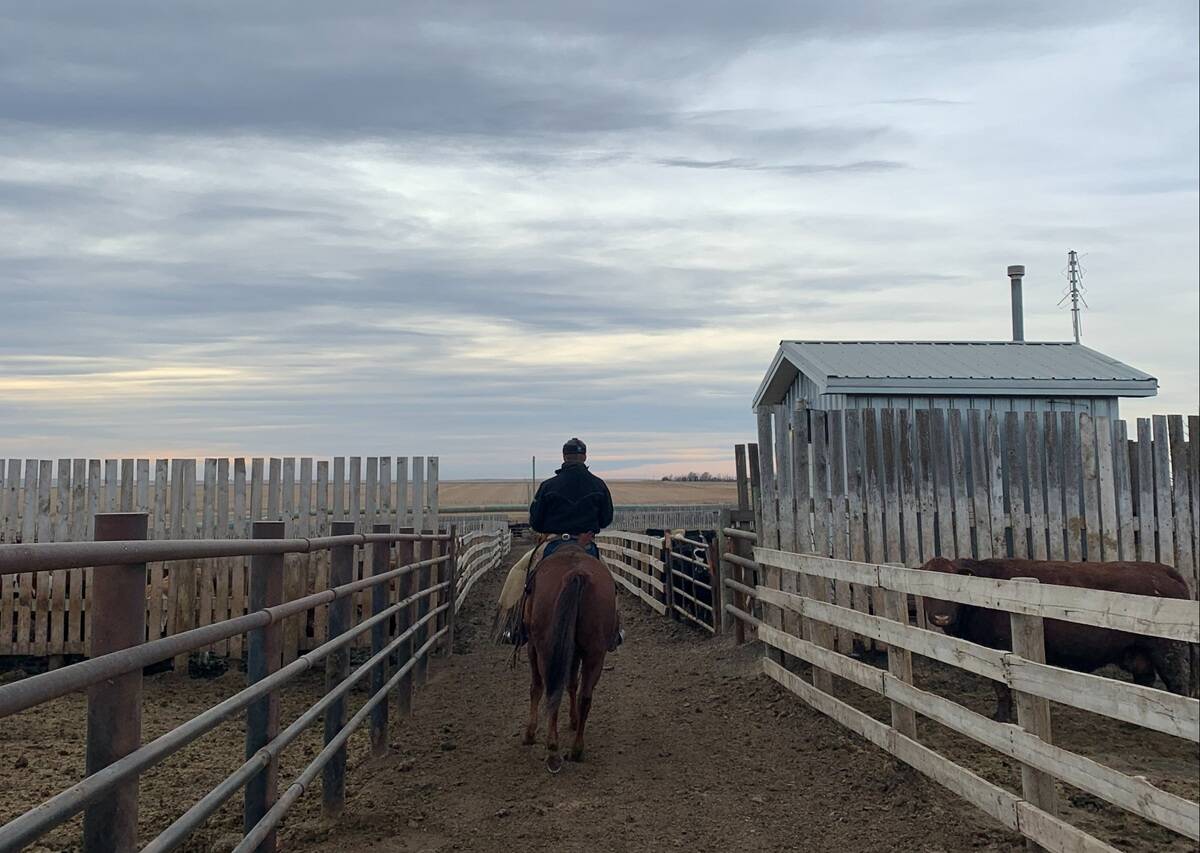
Pen riders still better than tech at detecting respiratory disease in feedlot cattle, says researcher
Recent research found that pen riders are better than tech at flagging signs of BRD in feedlot cattle
However, after three or four days of exposure to nitrates, the microbes in the cow’s rumen become more efficient at converting nitrate to nitrite to ammonia. After two weeks of nitrate exposure, the cow’s bone marrow will produce more red blood cells, boosting her oxygen-carrying capacity.
What’s the safe level for feeding nitrates? Many of the labs testing feed state that 0.5 per cent is the danger zone. Yaremcio says that traces back to research by Crawford in the ’60s. Crawford injected sodium nitrate directly into the jugular vein of the cows. Once concentrations hit 0.5 per cent, he started seeing animals having issues or dying. But at the same time, he was doing research feeding oat greenfeed at 0.9 per cent, “without any troubles whatsoever,” says Yaremcio. Cattle “shouldn’t have any troubles with one per cent nitrate,” at least most of the time, says Yaremcio.
But when nitrates rise above one per cent, ranchers need to be careful, especially if cows are within 60 days of calving. At that stage, the fetus’s oxygen demand is high. If the cow can’t supply enough oxygen for herself and the calf, she will abort the calf.
“So once you get in that two to three months of pregnancy, then I start getting a little jumpy even at one per cent.” For that reason, it’s better to offer higher-nitrate feed before the last three months of the cow’s gestation.
Yaremcio recommends introducing high-nitrate feed to animals gradually, over four stages. At first, high-nitrate feed should make up only 25 per cent of the ration. Give the herd half to three-quarters of its feed in the morning, and put out the high-nitrate feed mid-afternoon.
“The last thing you want to do is feed it in the morning when they’re really, really hungry. The boss cows will get more than what they should and the more timid ones or older ones won’t get what they need to get acclimatized.”
After three to five days, if the manure looks normal and the animals look healthy, step it up to 50 per cent, says Yaremcio. Follow the same process over a couple of weeks, eventually feeding 75 and then 100 per cent of the high-nitrate feed. By then, the animals will have more red blood cells and their rumen microbiomes will be more efficient at converting nitrites to ammonia.
When grazing canola regrowth with high nitrates, producers can use an electric fence to limit how much the cattle are getting each day. “There’s really nothing much other than management to limit the feed intake of high nitrate levels so that they don’t get too much.”
Feeding two to three pounds of starch will also help cattle covert the nitrate to ammonia. Even an oat greenfeed with two-thirds of a kernel filled should help reduce nitrate poisoning, says Yaremcio.

Another strategy producers may have heard of is ensiling the crop to reduce nitrates. “It is possible,” says Yaremcio.
But University of Kentucky researchers found to cut nitrates in the silage, they had to do a poor job of packing and covering the pit. That leads to poor fermentation and a much lower-quality forage. They also noted an orange gas, which is dangerous, coming from the uncovered silage pit.
“If you’ve got yellow or orange gases coming off the bottom of the pit, don’t go anywhere near it. It’ll kill you.”
Researchers concluded it’s better to “cover the pit, pack it right, do everything properly and then manage the nitrate levels later when you mix off with other feeds.”
Harvesting after a frost
A question often put to Yaremcio is whether producers will have nitrate problems if they cut the alfalfa crop after a frost. Whether it’s alfalfa or another legume such as peas, lentils or sainfoin, Yaremcio says the nodules in the legume’s root system will prevent any nitrate issues. “It’s regulated because nodules will only release what the plant needs.”
In his career, Yaremcio has only seen two alfalfa samples come back with high nitrates. “And the reason for that was, the producer went ahead and put out a whole bunch of liquid manure or slurry onto the field, which jacked the nitrate levels in the soil, and it just bypassed the nodules.”
Yaremcio says one of the biggest misconceptions is that a killing frost causes nitrate accumulation. A killing frost will kill all the plant’s vascular tissue, stopping all nutrient movement through the plant.
“It’s the light frost — the -1 C, -2 C — that causes the problem,” he says. After a light frost, the root system is still pushing up nutrients. The top of the plant is where nitrate is converted to protein, but that process is impaired by frost. Nitrates then accumulate, peaking about four or five days after a light frost or a hail storm.
If you do get a light frost, the best thing to do is cut it as quickly as possible, says Yaremcio, preferably within a day or two. Otherwise, it will be 10 to 14 days after the frost before the plants recover and nitrates dissipate. Depending on the time of year, waiting for nitrate levels to drop may be an option.
But continual light frosts will stress the plant, eventually killing it. The worst-case scenario is a light frost, followed by a killing frost four or five days later, says Yaremcio. “Then your nitrates are locked into the plant and it doesn’t dissipate with time.”
Jenay Werle, a livestock and feed specialist with Saskatchewan Agriculture in Yorkton, advises harvesting high-nitrate crops in the best condition possible — in other words, “make sure that you can cut it and bale it dry.”
Nitrate levels after a light frost will “first spike, and then they’ll slowly decrease over about 10 to 14 days,” says Werle. “But as we get into the fall, we really run into weather issues.”
Rather than hoping for enough fair weather in the fall, Werle suggests testing for nitrates and managing appropriately afterwards.
“If you try and wait out the weather, you might end up with really poor-quality feed and still (have) nitrates in the end anyway,” she says.
Yaremcio also has some advice on which type of feed analysis works best. Near infrared reflectance spectroscopy (NIRS) will yield similar results as wet chemistry for fibres and proteins, Yaremcio says, but the mineral results can be out by as much as 300 per cent with the NIRS. While wet chemistry tests may take an extra day or two, you can be confident they’re accurate, he adds.








